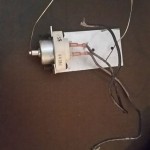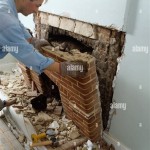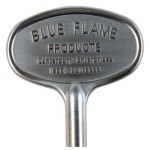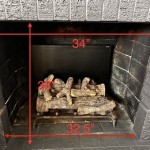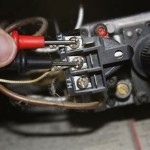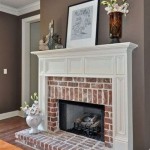Can You Put a Wood Burning Insert Into a Gas Fireplace?
The allure of a crackling fire is undeniable. It creates a warm and inviting ambiance, adds a touch of cozy charm to any space, and offers a sense of comfort and relaxation. For those seeking the authentic experience of a wood-burning fireplace, the question arises: can you simply install a wood-burning insert into an existing gas fireplace? While the idea might seem straightforward, it's crucial to understand the complexities and challenges involved before embarking on such a project.
In short, the answer is usually no. Installing a wood-burning insert into a gas fireplace is generally not recommended and often poses significant safety and structural concerns. This is primarily due to the fundamental differences in design, construction, and safety regulations between gas and wood fireplaces.
Structural Challenges
Gas fireplaces are designed with specific structural components and ventilation systems to handle the unique characteristics of gas combustion. They typically feature a sealed combustion chamber, a vent system that exhausts fumes externally, and a gas line connection for fuel delivery. Wood-burning fireplaces, on the other hand, rely on open combustion and require a different type of ventilation system to handle the smoke and ash produced during burning. The existing structure of a gas fireplace may not be suitable to accommodate the demands of a wood-burning insert, leading to safety hazards and potential structural damage.
Safety Concerns
The most critical factor to consider is safety. Gas fireplaces are meticulously engineered to prevent fires, carbon monoxide poisoning, and other dangers associated with combustible materials. Installing a wood-burning insert without proper modifications and inspections can compromise this safety system. The presence of a chimney and its connection to the exterior are crucial for safely venting smoke and gases produced by wood-burning fires. A gas fireplace's existing vent system may not be compatible with the requirements of a wood-burning insert, potentially leading to dangerous accumulations of smoke and carbon monoxide within the home.
Furthermore, the firebox of a gas fireplace may not be adequately designed to withstand the intense heat and potential for sparks generated by a wood-burning fire. This could lead to fire hazards, damage to the fireplace structure, and even potential structural collapse. The presence of a properly sized fireplace hearth and surrounding non-combustible materials around a wood-burning fireplace are crucial for safety but may not be present in a pre-existing gas fireplace installation.
Alternative Solutions
Instead of attempting to retrofit a wood-burning insert into a gas fireplace, there are more viable and safer options to achieve the desired aesthetic and functionality of a wood-burning hearth. One solution is to consider converting the existing gas fireplace to a wood-burning unit. This process usually involves removing the gas components and installing a wood-burning fireplace insert with a compatible chimney connection. However, this conversion requires professional expertise and adherence to local building codes and safety regulations. It is essential to consult with a qualified fireplace installer who can assess the feasibility and safety of such a conversion.
Alternatively, if a dedicated wood-burning fireplace is preferred, consider building a new fireplace from scratch. This approach allows for the installation of a wood-burning fireplace that is designed to meet the specific requirements of wood combustion, ventilation, and safety. This option offers the most control over the fireplace's design and functionality, enabling you to choose the best solution for your home. It is vital to select a qualified fireplace installer who adheres to building codes and safety standards to ensure a safe and efficient wood-burning fireplace.
Final Thoughts
While the idea of turning a gas fireplace into a wood-burning one might be appealing, the challenges and safety risks involved make it generally inadvisable. The fundamental differences in design, construction, and ventilation requirements between gas and wood fireplaces pose significant obstacles. The potential for safety hazards and structural damage cannot be overlooked. To achieve the desired warmth and ambiance of a wood-burning hearth, consider alternative solutions such as converting the existing gas fireplace or building a new wood-burning fireplace from scratch. Always consult with a qualified fireplace installer and prioritize safety when considering any modifications to your fireplace.

Convert From Wood To Gas With A Insert The Kernel Burner

Can A Wood Burning Fireplace Be Converted To Gas The Flame Company

Should You Convert Your Cabin Fireplace From Wood To Gas

Convert To Gas Installing Fireplace Inserts Doctor Flue

Convert Your Old Wood Fireplace To A Gas

Can You Burn Wood In A Gas Fireplace Kozy Heat Fireplaces

Why Get A Fireplace Insert Wood Gas Inserts In Tn Al

Fireplace Inserts Explained Typical Sizing Functionality More

Want To Convert Gas Wood Fireplace Full Service Chimney

Converting A Fireplace To Wood Burning Stove Chesneys
Related Posts

